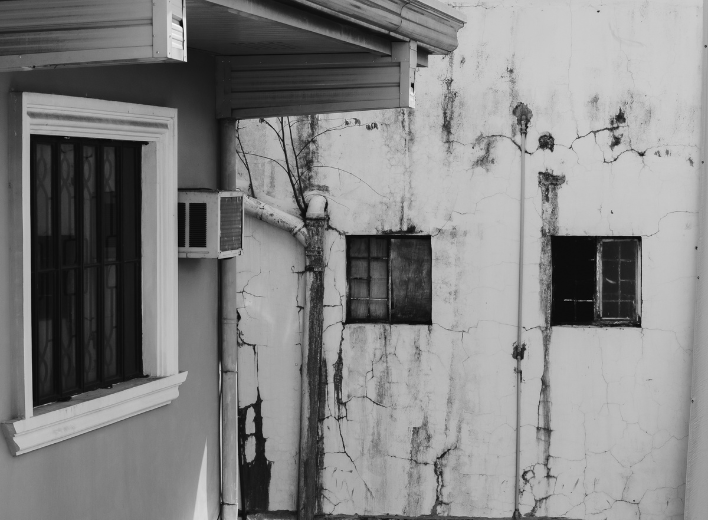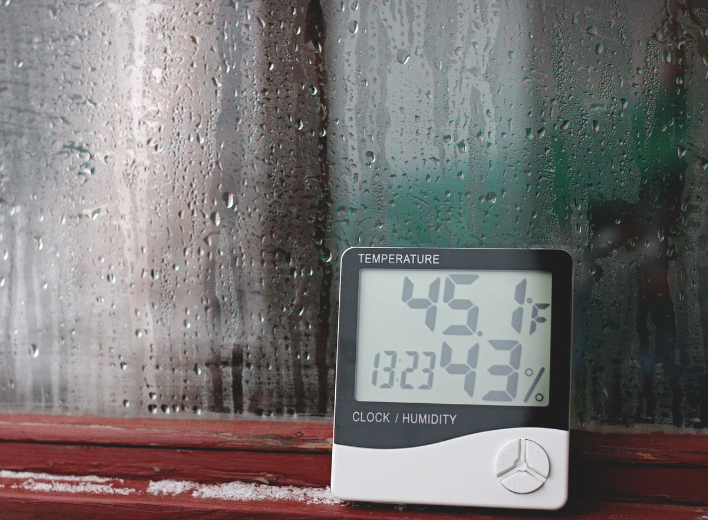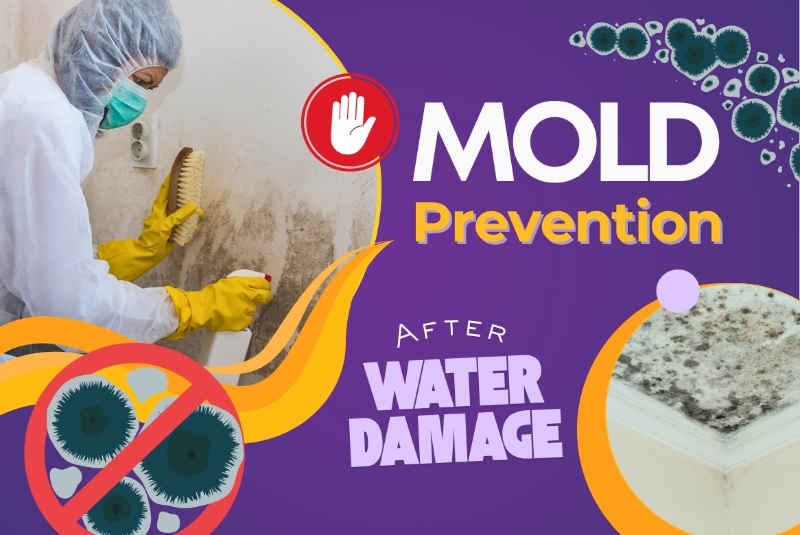Water damage can wreak havoc on your property, leaving behind more than just damp walls and peeling paint. One of the most insidious consequences is mold growth, which can silently take hold and lead to costly damage and health issues if not addressed promptly. Understanding how to protect your property is crucial, especially when it comes to prevention strategies that can outlast the immediate aftermath of water damage. In this article, we will explore effective long-term solutions for mold prevention after water damage tailored to your home’s unique needs. From innovative moisture control techniques to smart home maintenance habits, arming yourself with knowledge can turn your property into a mold-free oasis. Join us as we uncover actionable tips that not only safeguard your space but also provide peace of mind for years to come. Don’t wait until it’s too late—empower yourself today to protect your home from the lurking threat of mold.
Understanding the Risks of Mold After Water Damage

Mold is a pervasive and persistent problem that can arise following water damage, and understanding the risks it poses is essential for effective prevention. Mold spores are naturally present in the air, but they only become a problem when they settle on damp surfaces and begin to grow. This can happen within 24 to 48 hours after water exposure, making prompt action crucial. Once mold takes hold, it can spread quickly, damaging building materials, furnishings, and personal belongings.
The health risks associated with mold are significant and varied. Mold exposure can cause respiratory issues, allergic reactions, and exacerbation of asthma symptoms. For individuals with weakened immune systems, prolonged exposure to mold can lead to more severe health problems. Mold can also produce mycotoxins, which are toxic compounds that can pose additional health risks. Given these potential dangers, addressing mold growth swiftly and effectively is paramount to protecting both property and health. Learn more about warning signs in our guide to 6 warning signs of smoke damage—many principles also apply to mold detection.
Financially, mold remediation can be a costly process. The longer mold is allowed to grow unchecked, the more extensive and expensive the cleanup and repairs will be. This includes not only the cost of removing the mold itself but also repairing or replacing damaged materials. Property values can also be negatively impacted by mold infestations, making it harder to sell a home or business. By understanding the risks and taking proactive steps to prevent mold growth, property owners can save themselves significant time, money, and stress in the long run.
The Importance of Immediate Water Damage Response

When water damage occurs, the speed of your response can make all the difference in preventing mold growth. Acting quickly to address water intrusion is critical because mold spores can begin to colonize damp areas in as little as 24 hours. The first step in responding to water damage is to identify and stop the source of the water. Whether it’s a burst pipe, a leaking roof, or flooding, halting the water flow is essential to prevent further damage.
Once the source of the water has been controlled, the next step is to remove any standing water. This can be done using pumps, wet vacuums, or buckets, depending on the extent of the water. It’s important to wear protective gear during this process to avoid contact with potentially contaminated water. After removing the bulk of the water, the focus should shift to thoroughly drying the affected area. This involves using fans, dehumidifiers, and heaters to reduce humidity levels and speed up the drying process.
Time is of the essence when dealing with water damage. The longer water is allowed to sit, the more likely it is to seep into building materials and create the ideal conditions for mold growth. See our full checklist on what to expect during home restoration for insight into response timelines. Carpets, drywall, and insulation are particularly vulnerable to water damage and can harbor mold if not dried properly. By responding swiftly and efficiently to water damage, property owners can significantly reduce the risk of mold and minimize the overall damage to their property.
Effective Drying Techniques to Prevent Mold Growth

After water damage, proper drying is one of the most critical steps in preventing mold growth. By using the right techniques, homeowners can protect their property from long-term structural and health issues.
Removing Standing Water Quickly
The first priority is to eliminate standing water as soon as possible. Submersible pumps, wet/dry vacuums, or even simple mops and buckets can be used to clear pooled water. Prompt removal helps stop moisture from seeping deeper into building materials, where mold can take hold.
Using Fans and Dehumidifiers
Air circulation and humidity control are essential for effective drying. Fans speed up evaporation by keeping air moving, while dehumidifiers pull excess moisture from the environment. For best results, place fans near windows and doors to push out damp air and bring in fresh, dry air. Dehumidifiers should run continuously until humidity levels are restored to normal.
Replacing Damaged Materials
Some water-damaged materials—such as carpet, drywall, and insulation—cannot be dried thoroughly and should be removed and replaced. These porous materials can trap hidden moisture, creating ideal conditions for mold growth. For structural elements that cannot be removed, a moisture meter can help track the drying process and confirm when the area is safe. Check out these tile and floor cleanup tips after water damage to ensure you’re not missing hidden moisture.
By combining quick water removal, efficient air circulation, and careful material replacement, property owners can effectively dry out their space and minimize the risk of mold growth.
Long-Term Mold Prevention Strategies

Preventing mold requires consistent effort and smart maintenance habits. By keeping moisture under control, improving airflow, and conducting regular inspections, property owners can stop mold growth before it becomes a costly problem, ensuring healthier indoor air and long-lasting property protection.
1. Control Indoor Moisture Levels
Moisture is the leading cause of mold growth, making leak prevention a top priority. Regularly check plumbing, roofing, and windows for signs of water damage. Installing water-resistant materials in bathrooms and basements also helps safeguard against mold-friendly conditions.
2. Improve Home Ventilation
Proper ventilation is essential for reducing humidity in high-moisture spaces. Kitchens, bathrooms, and laundry rooms benefit from exhaust fans, while dehumidifiers work well in basements. Maintaining airflow prevents damp environments where mold thrives and improves overall indoor comfort.
3. Maintain HVAC Systems Regularly
Mold can hide inside heating and cooling systems, spreading spores throughout the home. Routine HVAC maintenance, including cleaning air ducts and replacing filters, reduces this risk. Well-maintained systems ensure clean air circulation and prevent mold from settling unseen.
4. Conduct Routine Property Inspections
Early detection is key to long-term prevention. Inspect for musty odors, discoloration on walls or ceilings, and window condensation. Addressing these issues immediately prevents small problems from escalating into widespread infestations that require costly remediation. Explore our advice on Virginia seasonal causes of home flooding to reduce long-term mold risk.
The Role of Humidity Control in Mold Prevention

Controlling humidity levels is a critical aspect of mold prevention, as mold thrives in environments with high moisture levels. Ideally, indoor humidity should be kept between 30% and 50% to prevent mold growth. Using dehumidifiers, especially in areas prone to dampness such as basements and bathrooms, can help maintain optimal humidity levels. It’s important to regularly check and empty the water collection containers of dehumidifiers to ensure they are functioning effectively.
Proper ventilation is also essential in controlling humidity. Exhaust fans should be used in high-moisture areas like kitchens, bathrooms, and laundry rooms to expel humid air and reduce moisture buildup. Additionally, ensuring that the property is well-ventilated by opening windows and doors when weather permits can help to circulate air and reduce indoor humidity. Using air conditioners during hot, humid weather can also help to maintain a comfortable indoor environment and prevent mold growth.
Monitoring humidity levels with a hygrometer can provide valuable insights into the indoor environment and help property owners take timely action to address any issues. Placing hygrometers in various rooms can help identify areas with high humidity and allow for targeted interventions. Discover more humidity management tips in our post-fire home inspection checklist where moisture tracking is vital. By effectively controlling humidity levels, property owners can create an inhospitable environment for mold and protect their property from the damaging effects of mold growth.
Regular Maintenance Practices for Property Owners

Consistent maintenance is the foundation of protecting your property from water damage and mold. By adopting preventive habits such as routine inspections, proper drainage care, and effective ventilation, property owners can reduce risks, lower repair costs, and maintain a healthier indoor environment.
Conduct Routine Property Inspections
Regular inspections help detect issues before they escalate. Check plumbing systems for leaks, inspect the roof for missing shingles or damage, and ensure windows and doors are properly sealed. Addressing small problems early prevents costly water damage and structural concerns later.
Keep Gutters and Downspouts Clear
Clogged gutters often cause water to overflow, leading to roof and foundation damage. Cleaning gutters regularly and ensuring downspouts direct water away from the home reduces this risk. Installing gutter guards can further minimize debris buildup and maintenance efforts.
Ensure Proper Ventilation
Moisture buildup creates ideal conditions for mold growth. Use exhaust fans in kitchens, bathrooms, and laundry areas, and consider dehumidifiers in damp spaces. Regularly servicing HVAC systems and replacing filters helps maintain airflow, reduce humidity, and protect air quality.
Maintain HVAC Systems Regularly
A clean, well-maintained HVAC system prevents mold from spreading through air ducts. Schedule professional servicing, replace filters consistently, and keep ducts clear of debris. Understand the difference between flood and water damage to better maintain your systems year-round. These practices not only enhance air circulation but also safeguard against hidden mold problems within the system.
When to Call in Professional Mold Remediation Services

While some mold issues can be addressed by property owners, there are situations where professional mold remediation services are necessary. If the mold growth is extensive, covering a large area or affecting multiple rooms, it’s important to call in professionals. Extensive mold infestations can be difficult to fully eliminate without the proper equipment and expertise, and attempting to handle it on your own can lead to incomplete removal and recurring issues.
Another scenario where professional help is needed is when mold is present in hard-to-reach or hidden areas. Mold can grow behind walls, under flooring, and in HVAC systems, making it challenging to detect and remove. Professionals have the tools and knowledge to identify and address mold in these hidden areas, ensuring thorough remediation. Additionally, if mold growth is accompanied by a strong, persistent musty odor, it may indicate a more serious problem that requires professional intervention.
Health concerns are also a valid reason to seek professional mold remediation services. If anyone in the property is experiencing symptoms such as persistent coughing, sneezing, or respiratory issues that could be related to mold exposure, it’s important to address the problem promptly. Professional mold remediators can safely remove mold and provide recommendations for preventing future growth, helping to protect the health of occupants. By knowing when to call in the experts, property owners can ensure that mold issues are effectively resolved and prevent further damage.
Conclusion: Safeguarding Your Property for the Future
Protecting your property from the long-term effects of water damage and mold growth requires a proactive and informed approach. By understanding the risks of mold, responding promptly to water damage, and implementing effective drying techniques, property owners can significantly reduce the likelihood of mold taking hold. Regular maintenance, proper ventilation, and humidity control are key strategies for keeping mold at bay and maintaining a healthy living environment.
Knowing when to call in professional mold remediation services and being aware of legal and insurance considerations can further empower property owners to address mold issues effectively. By staying vigilant and taking preventive measures, property owners can safeguard their investment and ensure a safe and comfortable living space for years to come. Take the next step in protecting your home—explore our professional mold remediation services in the area now. Don’t wait until it’s too late—take action today to protect your property from the hidden threat of mold and enjoy peace of mind knowing that your home is a mold-free oasis.

